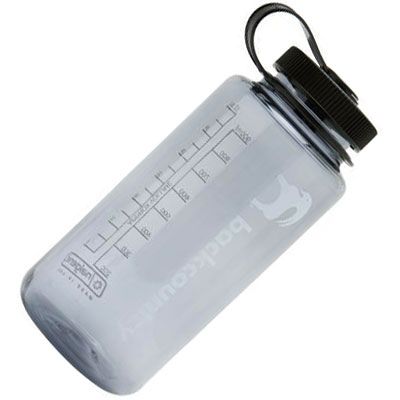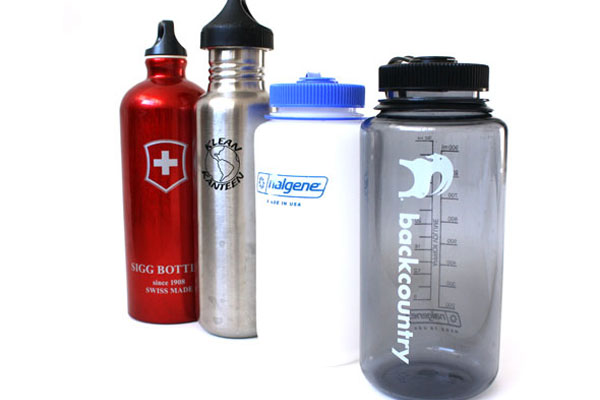Nalgene Tritan Bottle

- Lexan-like performance
- BPA-Free
- safety?
- 6.3 ounces
BPA! It's like the unseen creature in a horror movie—you know it's out there, but you just don't know whether or not it's going to get you.
Yes, our love affair with the wonder-plastic Lexan (polycarbonate) has gone sour thanks to its maybe-toxic maybe-not ingredient, BPA, which mimics hormone molecules. We probably won't ever know exactly how safe or unsafe drinking water in Lexan bottles actually is. But we do know this: the winds of change have blown BPA-leeching plastics into the doghouse, causing North American consumers to rush toward BPA-free alternatives.

Poised to take advantage of this stampede is Eastman Chemical and its Tritan™ Co-Polyester plastic. BPA-free Tritan plastic has now completely replaced Lexan in Nalgene's water bottle lineup. What is Tritan? It is a new plastic—not simply BPA-free polycarbonate. This, alas, raises a bit of a shadow of safety concerns. But let's skip past that for just a moment.
Nalgene's Lexan water bottles were immensely popular (before the scare) thanks to several key traits of polycarbonate containers. First, they are odorless and tasteless, imparting no unwanted scent or flavor to liquids—in contrast, say, to HDPE's rather obvious smell. Polycarbonate bottles are also fantastically strong. They are in fact nearly shatterproof, making polycarbonate the material of choice in today's sunglasses and prescription eyewear. Polycarbonate/Lexan bottles resist scratching, and are much more heat resistant than other plastics.
This not only allowed you to put these bottles in the dishwasher—it also let winter campers put boiling water into their Nalgene bottles without fear of melting. The beauty of Eastman's BPA-free Tritan plastic is that it more or less matches all of these qualities. Like Lexan, it is odorless/tasteless, wonderfully heat-resistant, and nearly shatterproof.
On the downside, both Tritan and Lexan are significantly heavier plastics than HDPE, roughly doubling an empty HDPE container's weight. Tritan is also much more expensive than HDPE, though this is mitigated by the low retail price overall. The big concern, however, is basically the same as the old Lexan problem: yes, Tritan is BPA-free, but it is also brand new, and we just don't have any long-term information on exactly how safe it is.
In my testing, I found Tritan virtually indistinguishable from Lexan in all desired qualities. But for the most sensitive users (ie, Pregnant women, small children), I find I can't recommend Tritan based on how new it is. I want more time, and more studies, before I'm willing to call Tritan a true miracle plastic. For now, that makes Tritan an essentially identical choice to Lexan. If safety is your number one concern, go with a stainless steel bottle (first) or HDPE (second). And if safety isn't your concern, why were you worrying about Lexan in the first place?






 Steripen Freedom
Steripen Freedom SteriPen Adventurer
SteriPen Adventurer Nalgene Tritan
Nalgene Tritan MSR Hyperflow Microfilter
MSR Hyperflow Microfilter Nalgene HDPE
Nalgene HDPE Katadyn Hiker Microfilter
Katadyn Hiker Microfilter Klean Kanteen
Klean Kanteen